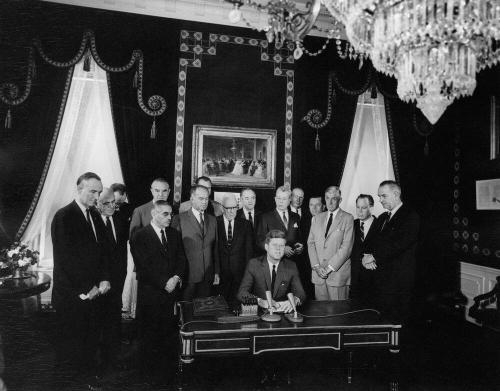On April 8 in Prague, President Barack Obama and Russian President Dmitry Medvedev signed a new strategic offensive arms agreement to replace the 1991 Strategic Arms Reduction Treaty (START I), which expired in December 2009.
If the Senate and the Russian Duma consent to ratification of the treaty, the United States and Russia each will be limited to 1,550 deployed strategic warheads on no more than 800 deployed and nondeployed strategic nuclear delivery vehicles—a steep cut from START I levels, which permitted each side 6,000 warheads on 1,600 delivery vehicles or launchers. The New START limit on deployed strategic warheads is 30 percent lower than the warhead ceiling of 2,200 set by the 2002 Strategic Offensive Reductions Treaty (SORT).
The new treaty is supported by a set of effective verification measures, which should provide high confidence that any militarily significant violation would be detected in a timely manner. The verification regime, however, differs from the 1991 agreement. For example, New START is a simpler agreement in several ways, requiring less-demanding monitoring measures.
The new treaty is good news. It will reduce Russian and U.S. strategic forces while allowing the United States to maintain a robust nuclear deterrent. It will provide transparency and predictability regarding Russian strategic nuclear forces. Its conclusion demonstrates that Washington and Moscow are fulfilling their nuclear Nonproliferation Treaty (NPT) commitments on the eve of the May NPT review conference; that will strengthen the administration’s hand in seeking to tighten the nonproliferation regime. The treaty also should give a boost to the overall U.S.-Russian relationship. Finally, it provides a framework for further reductions in strategic nuclear forces.
This article describes New START, its principal numerical limits, its monitoring measures, and the ways in which it will advance U.S. national security interests.

Commentary
New START: Good News for U.S. Security
May 7, 2010